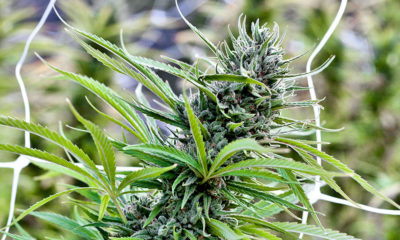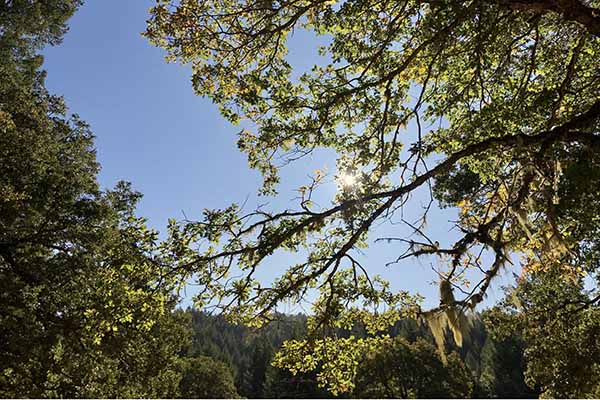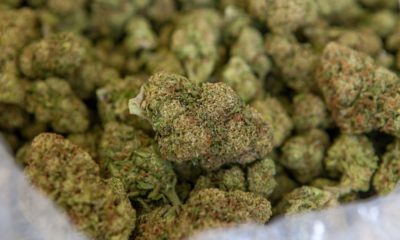
Joint Opinions
The Harvest is Here
A California cannabis farmer looks to the last harvest without stringent state regulations.
Autumn and harvest, it’s such a special time of year in the Emerald Triangle. Gusty winds blow puffy clouds across crystal blue skies. The winds blow the leaves and pine needles off the tall trees, creating a blanket of rust colored mulch to enrich the soil.
It’s an instinctual thing: the cool breezes and shorter days signal the farmer to prepare the barn to receive the fruits of summer’s labor. How ancient is that? Given that cannabis use dates back at least 10,000 years, we can imagine the process has always been pretty much the same.
By early September, the farmer is already thinking of how to harvest, dry and cure their crop because every year can be so very different. Is it a dry year or a wet year? Different precautions must be made for each weather condition and sometimes the weather can change overnight in the middle of harvest season.
Supplies must be purchased and the wares in the shops reflect the needs of the local inhabitants. Several shelves are devoted exclusively to trimming gear, such as scissors, gloves, trim trays, storage bins and denatured alcohol to clean up. In fact, cannabis is such a dominant crop around here that about 10 years ago a representative from Reynolds Inc. came out to present an award to the grocery store in Laytonville for selling by far the most “turkey bags” in the whole country. These plastic oven bags have a particular use Reynolds must not have been aware of: they are the preferred method for storing and shipping cannabis, as they do not emit any telltale odors. I imagine by now Reynolds is preparing to launch a cannabis biz themselves. Isn’t everyone?
OK, back to harvest. Another sure sign of harvest in “The Triangle” is the “trimmigrants” everywhere. Young people from all across the globe flock to small towns up in the hills, in search of some quick money trimming weed. Some have experience, most don’t. Some are good kids, and others you would never want on your private ranch. Most old time farmers have faithful trimmers who return year after year, but newbie growers must resort to workers fresh off the boat, so to speak.
Over the years in Mendocino County, I have experienced many trim scenes and each is unique. I like to think of it as running a beauty parlor, where the girls are primped and manicured into perfection to be admired and appreciated. Yet other scenes I have visited can be rough or uncomfortable and certainly not sanitary.
Along with the hard work and long hours, hopefully a camaraderie develops among the crew. The vibe in the garden and around the trim table is projected into these sensitive girl flowers. It’s a time of year when you just have to accept that your house will be overrun by people hanging and snipping cannabis for hours every day. That’s how it has always been at harvest season.
At our farm, in late afternoon, we ask each plant whether she is ready to come in the following morning. For those plants that say, “Yes, I want to come in tomorrow,” we prepare for the big day by snapping off most of the big shade leaves, leaving a few smaller ones to protect her delicate buds. The following morning we rise before dawn and cut the girls at the peak moment when their terpenes are the highest. They are then gently carried to the barn and hung to begin the drying process.
Every farmer has their own technique. Some farmers cut and bring in the whole plant to hang upside down to dry, while others cut the large branches first and do it in stages. Most harvest all day long, as larger plants and bigger grows require more time. Some strains have a shorter growing cycle and come in earlier, while others take longer. So the harvest generally takes place over a four-to-five week period, and the following weeks are filled with trimming and curing.
By the end of October the cutting phase of harvest season is starting to wind down. Halloween parties in the hills can often be a real hoot with outrageous costumes. People unleashed from endless hours of sitting clipping buds are ready to party with crazy dancing and rejoicing over what is hopefully a generous season for all.
By Thanksgiving, scissors are put down, trimmers fade away, the bud is stored in safe, dark, cool places and the season wraps up once again. What’s not trimmed by then can wait until after The Emerald Cup and the holidaze, because everyone is ready for a break. In some ways, it could be any crop in any era, as the proud farmers share the fruits of their labor, be it vegetables, fruits or cannabis. It is all about that special feeling of knowing that you grew that produce for all to enjoy.
This is a particularly unusual harvest season since no one really knows what is actually legal. With pending ordinances and regulations being written, it is changing from day to day. Next year will be completely different, as county regulations will require non-residential and commercially permitted buildings for all cannabis operations. Trimmers will have to pay taxes and wear hair nets and every plant will be inventoried under track and trace from seed to sale, to cite just a few examples.
For small craft cannabis farmers in the hills, erecting new buildings is prohibitive. For the large farms which are popping up in other parts of the state, this makes sense. Next year we will be required to have our precious flowers transported by a distributor to the processor or trimmer and packager. Then the distributor will send it to the testing lab and if it passes, deliver it to the retailer. The personal touch may be lost. And so this season we will savor the simple joys of a family farm, harvesting, trimming, packaging and savoring the crop, as has happened for generations. It may be our last chance.
TELL US, have you ever joined in a cannabis harvest?

























